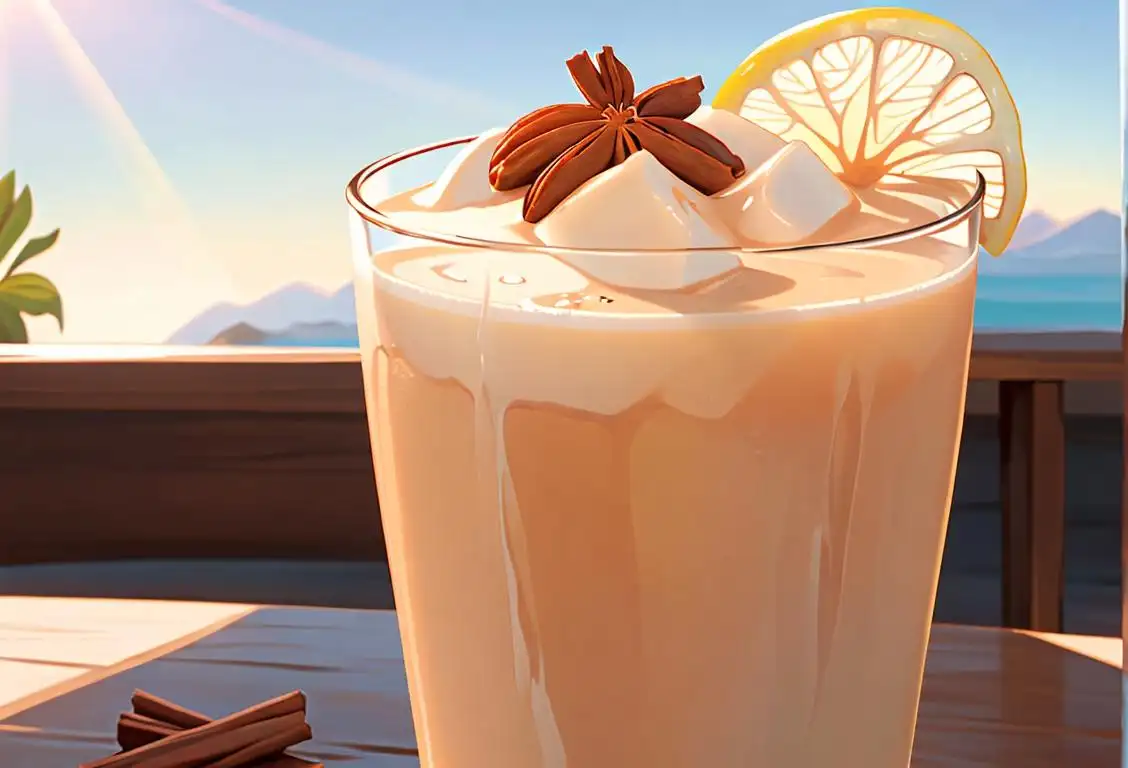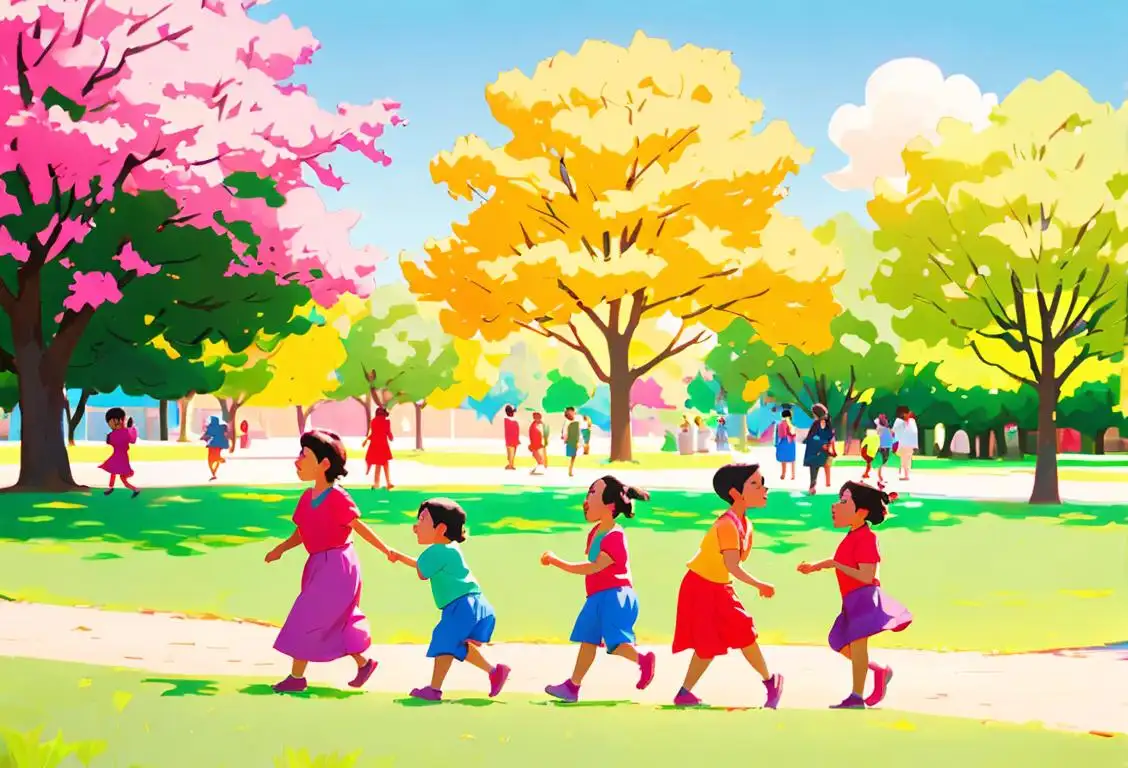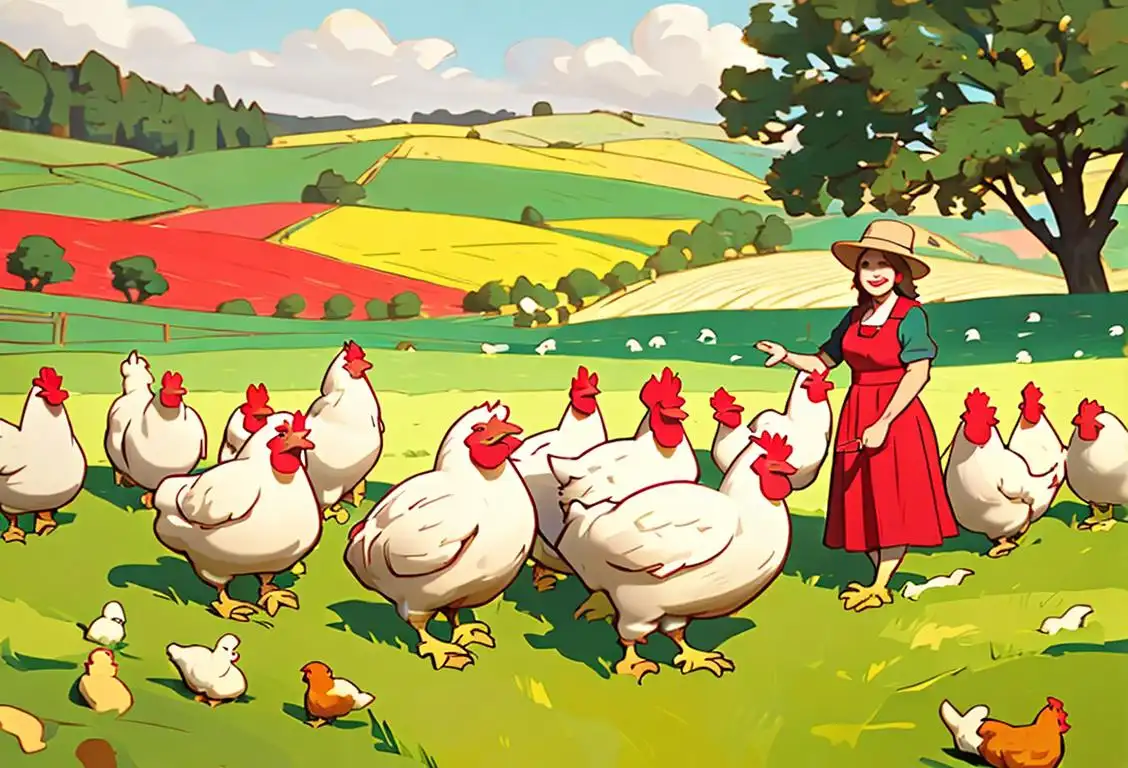National Horchata Day

Do you hear that? It's the sound of clinking glasses and the rattling of ice cubes. Why, you ask? Because it's National Horchata Day! Get ready to savor the creamy deliciousness of this delightful beverage as we dive into its internet history and celebrate the wonders of horchata.
When is Horchata Day?
It's national horchata day on the 24th September.
The Internet Buzz for National Horchata Day
On September 24, 2020, the internet exploded with excitement as people from all over shared their love for horchata. With 42 online mentions and counting, it's clear that this sweet and refreshing drink has captured the hearts (and taste buds) of many.
Horchata, for those who haven't had the pleasure of indulging in it, is a traditional beverage popular in Latin American and Spanish cultures. It typically consists of ground almonds, rice, or tiger nuts mixed with water and flavored with ingredients such as cinnamon, vanilla, or cocoa.
What makes horchata so special? Well, besides the fact that it tastes like a dream, it's also a versatile drink. Some enjoy it on its own, while others use it as a base for cocktails or even pour it over their morning cereal. Talk about starting the day off right!
But let's get back to the internet history of National Horchata Day. From mouthwatering pictures shared on Instagram to lively discussions on Twitter about the best horchata recipes, social media was buzzing with enthusiasm. People shared their favorite spots to grab a cup of horchata, debated on the correct way to pronounce it (for the record, it's pronounced or-CHAH-tah), and even reminisced about memories tied to this beloved drink.
The online celebration of National Horchata Day perfectly captured the joy and community that comes with enjoying a fantastic beverage. So, whether you're a longtime horchata enthusiast or have yet to try this delicious drink, there's no better time to join in the celebration!
History behind the term 'Horchata'
13th century
Introduction to the 'horchata' beverage
Horchata traces its origins back to the 13th century in Valencia, Spain. This refreshing and creamy beverage is made from various ingredients, including tiger nuts (chufa), water, and sugar. The people of Valencia quickly embraced the drink for its unique taste and cooling properties.
16th century
Influence of the Moors in the recipe
During the 16th century, Spain was under Moorish rule, and the influence of Islamic culture can be seen in various aspects, including the horchata recipe. The Moors introduced the use of tiger nuts to make the drink, as they are abundantly found in North Africa. This infusion of flavors added a richness and nuttiness to the traditional horchata recipe.
18th century
Rise of the horchata vendors
In the 18th century, horchata gained popularity beyond the borders of Valencia. Street vendors, known as 'horchateros,' emerged, selling the delicious beverage in the streets. They used special carts called 'horchateras' to carry and serve the chilled drink. These horchateros played a crucial role in spreading the horchata culture throughout Spain.
19th century
Widespread availability and variations
By the 19th century, horchata had become a staple drink in Spain, with horchaterias (horchata shops) flourishing across the country. While the original recipe with tiger nuts remained popular, regional variations started to emerge. Some areas substituted tiger nuts with rice, while others incorporated almonds or other ingredients to create local flavors of horchata.
20th century
Horchata spreads internationally
During the 20th century, horchata gained recognition beyond Spain and made its way to different parts of the world. Latin American countries, such as Mexico, Argentina, and Venezuela, adopted their versions of horchata, often using rice as the base ingredient. In the United States, particularly in regions with strong Mexican influences, horchata became a popular beverage among various communities.
Did you know?
Did you know that horchata has a long and fascinating history? It dates back to ancient Egypt, where it was known as "horachata" and made with sesame seeds. It then traveled through different cultures, evolving along the way to the horchata we know and love today. So, when you take a sip of horchata, you're not just enjoying a tasty beverage, you're also sipping on centuries of history!Tagged
nsfw food funFirst identified
14th September 2020Most mentioned on
24th September 2020Total mentions
42Other days
Chocolate Mousse Day
Something On A Stick Day
Children Day
Awareness Day
Frappe Day
Taco And Vodka Day
Happiness Day
Opposite Day
One Day
Poultry Day









